Top 7 Cyber Threat Hunting Tools for 2024

Cyber threat hunting is a proactive security measure taken to detect and neutralize potential threats on a network before they cause significant damage. To seek out this type of threat, security professionals use cyber threat-hunting tools. These are software solutions driven by advanced analytics, machine learning and artificial intelligence to detect abnormal patterns in a system’s network and endpoints. They use techniques like behavioral analytics, pattern matching, statistical analysis and AI/ML modeling.
With reports indicating that 72% of businesses worldwide were affected by ransomware attacks in 2023, more organizations are looking for cyber threat hunting solutions this year.
In this guide, we explore the top cyber threat-hunting tools for 2024, and compare their features, benefits and drawbacks.
Top threat hunting solutions comparison
The table below lists top threat hunting solutions and how their features compare.
| Deployment model | Centralized Log Collection | Automated Threat Detection | Advanced Threat Hunting | 24/7 Monitoring | Pricing | |
|---|---|---|---|---|---|---|
| VMware Carbon Black Endpoint | On-premises, Cloud-based, Hybrid | Yes | Yes | Yes | Yes | Contact vendor for a quote. |
| CrowdStrike Falcon Overwatch | On-premises, Cloud-based | Yes | Yes | Yes | Yes | Contact vendor for a quote. |
| Splunk | On-premises, Cloud-based, Hybrid | Yes | Yes | Yes | Yes | Contact vendor for a quote. |
| SolarWinds Security Event Manager | On-premises, cloud-based | Yes | Yes | Yes | Yes | Contact vendor for a quote. |
| Trend Micro Managed XDR | Cloud-based | Yes | Yes | Offered as a managed service. | Yes | Contact vendor for a quote. |
| Heimdal Threat Hunting and Action Center | On-premises, Cloud-based, Hybrid | Yes | Yes | Yes | Yes | Contact vendor for a quote. |
| Cynet 360 AutoXDR | On-premises, IAAS, SAAS and hybrid | Yes | Yes | Yes | Yes + 360-degree protection. | Contact vendor for a quote. |
VMware Carbon Black Endpoint: Best for offline and hybrid environments
VMware Carbon Black Endpoint, developed by VMware is a threat-hunting tool equipped with behavioral endpoint detection and response (EDR), extended detection and response (XDR) and a next-generation antivirus (NGAV). These features combine with its machine learning capability to deliver advanced threat hunting. The solution continuously records and analyzes endpoint activity and behaviors to detect advanced threats.
Leveraging unsupervised machine learning models, Carbon Black Endpoint can detect anomalies and suspicious events that may indicate malicious activity across the cyber kill chain. With the solution, organizations can gain EDR visibility in offline, hybrid and disconnected environments.
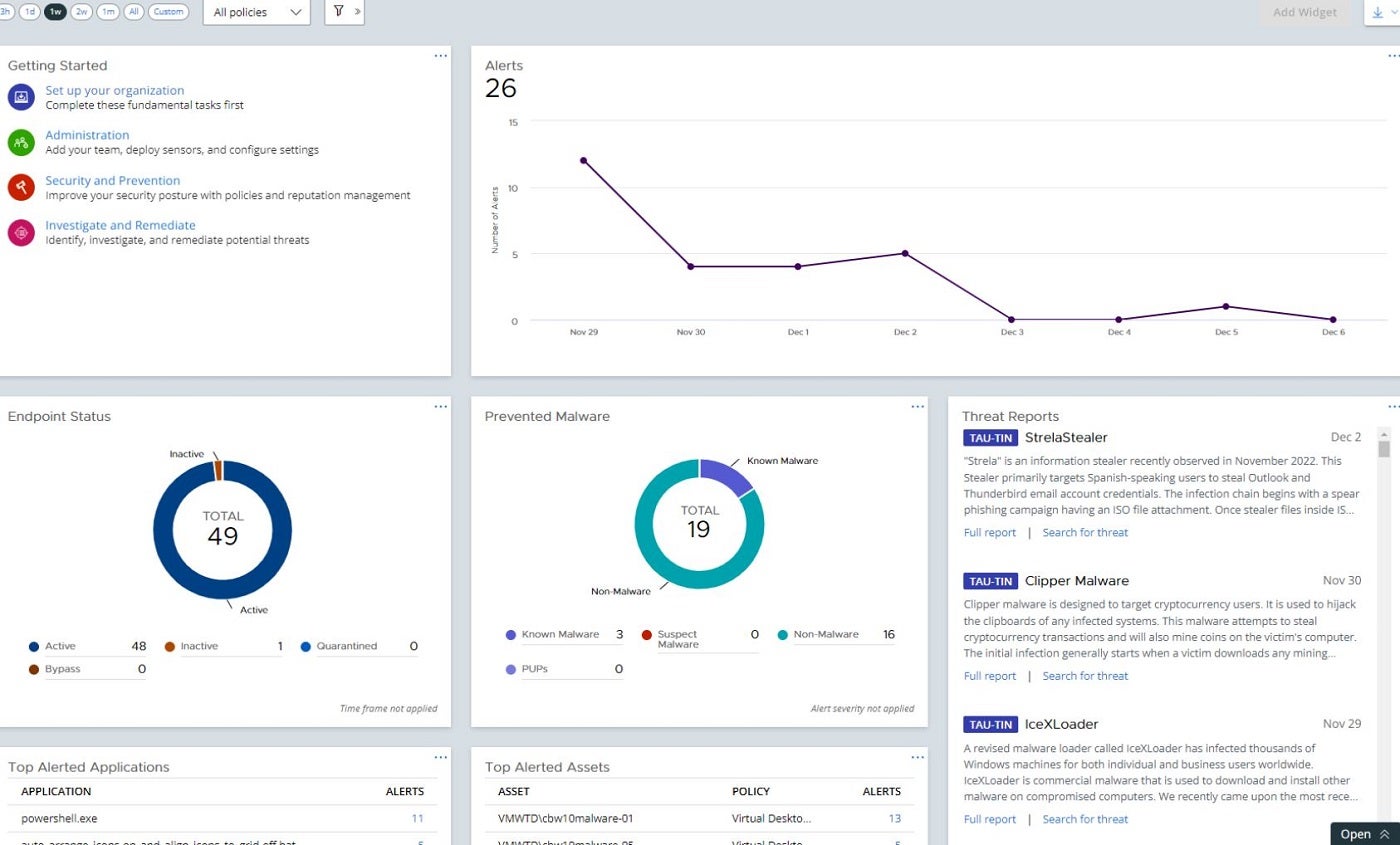
Why we chose VMware Carbon Black Endpoint
VMware Carbon Black Endpoint made it to our list due to its EDR visibility that covers offline, air-gapped and disconnected environments.
Pricing
Reach out to the vendor for pricing.
Features
- Next-gen antivirus.
- Behavioral Endpoint Detection and Response (EDR).
- Anomaly detection.
- Increased endpoint and container visibility.
- Automated threat hunting.
Pros
- Integration with popular security tools like Splunk, LogRhythm and Proofpoint.
- Supports compliance and audit features.
- Endpoint visibility inside and outside of the corporate network.
- Advanced Predictive Cloud Security.
- Mutual threat exchange between clients.
Cons
- No audit and remediation in the standard version.
CrowdStrike Falcon Overwatch: Best for advanced threat hunting

This next-gen SIEM and threat hunting solution from CrowdStrike is integrated with advanced EDR and XDR capabilities. CrowdStrike’s Overwatch uses its SEARCH methodology to hunt and stop threats. Through this methodology, CrowdStrike’s Overwatch leverages cloud-scale data, insights from in-house analysts and threat intelligence to mine large amounts of data for signs of intrusion or attack. Also, its lightweight sensor watches and collects data from a vast range of endpoint events uploaded to its cloud storage for analysis.
Another impressive feature within Overwatch is the threat graph, which helps cyber analysts determine the origins of threats and how they could spread.

Why we chose CrowdStrike Falcon Overwatch
We chose this solution for its dedicated approach to advanced threat hunting and automated response to threats, which is achieved by a blend of advanced EDR, XDR and proprietary features.
Pricing
The CrowdStrike Falcon Overwatch offers a 15-day free trial and features two plans: the Falcon Overwatch and Falcon Overwatch Elite. Contact the vendor for a quote
Features
- Advanced EDR and XDR.
- Visibility with Falcon USB Device control.
- Automated threat intelligence.
- Threat Graph.
- Firewall management.
Pros
- Threat alerts are augmented with context.
- Includes options for managed service.
- Offers a 15-day free trial.
- XDR capabilities for advanced threat detection and response.
- Quarterly threat hunting reports.
Cons
- Threat hunting and investigation coaching are exclusive to Falcon Overwatch Elite users.
Splunk: Best for large enterprises

Splunk offers a cloud, on-premises or hybrid solution with threat-hunting capabilities. The tool integrates insights into the core of its security information and event management (SIEM) to detect and respond to security threats. Considering its cost and capabilities, it is more suitable for larger enterprises.
With Splunk, users can create their own threat-hunting queries, analysis routines and automated defensive rules. It also boasts advanced threat detection with about 1,400 detection frameworks and an open, extensible data monitoring platform.
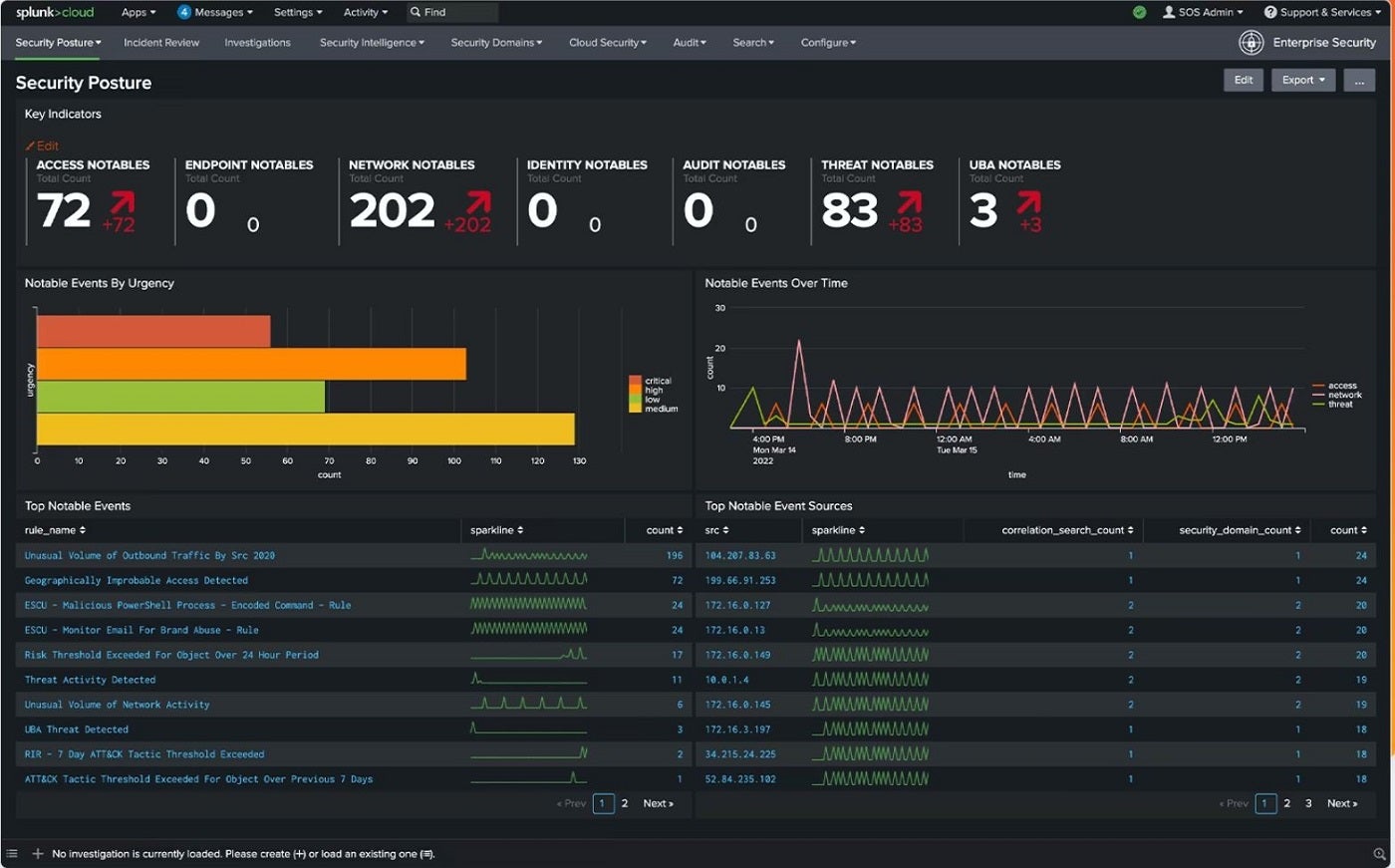
Why we chose Splunk
Splunk was chosen for its diversity in cloud, on-premises or hybrid threat hunting and extensive detection framework.
Pricing
This solution offers a 14-day trial period. For pricing, contact the vendor.
Features
- Multi-platform integration.
- Open, extensible data monitoring platform.
- Security posture dashboard and threat topology.
- Advanced threat detection.
- Risk-based alerting.
Pros
- Offers threat intelligence management.
- Customizable event prioritization.
- Flexible deployment options.
- Rapid and responsive security content updates.
- Scalable enterprise-focused threat detection and analysis.
Cons
SolarWinds Security Event Manager: Best for centralized threat management

SolarWinds Security Event Manager (SEM) delivers its threat hunting capabilities through a combination of real-time network performance statistics and data derived from various sources, such as the Simple Network Management Protocol (SNMP) and log entries. The information derived from SNMP allows the system to gather data about network devices, performance metrics and other critical aspects in real-time.
By parsing and interpreting log data, SEM can identify patterns, anomalies and potential threats. This tool also has a central hub for gathering, analyzing and responding to security events produced by diverse security technologies, such as firewalls, intrusion detection systems and endpoint protection solutions.
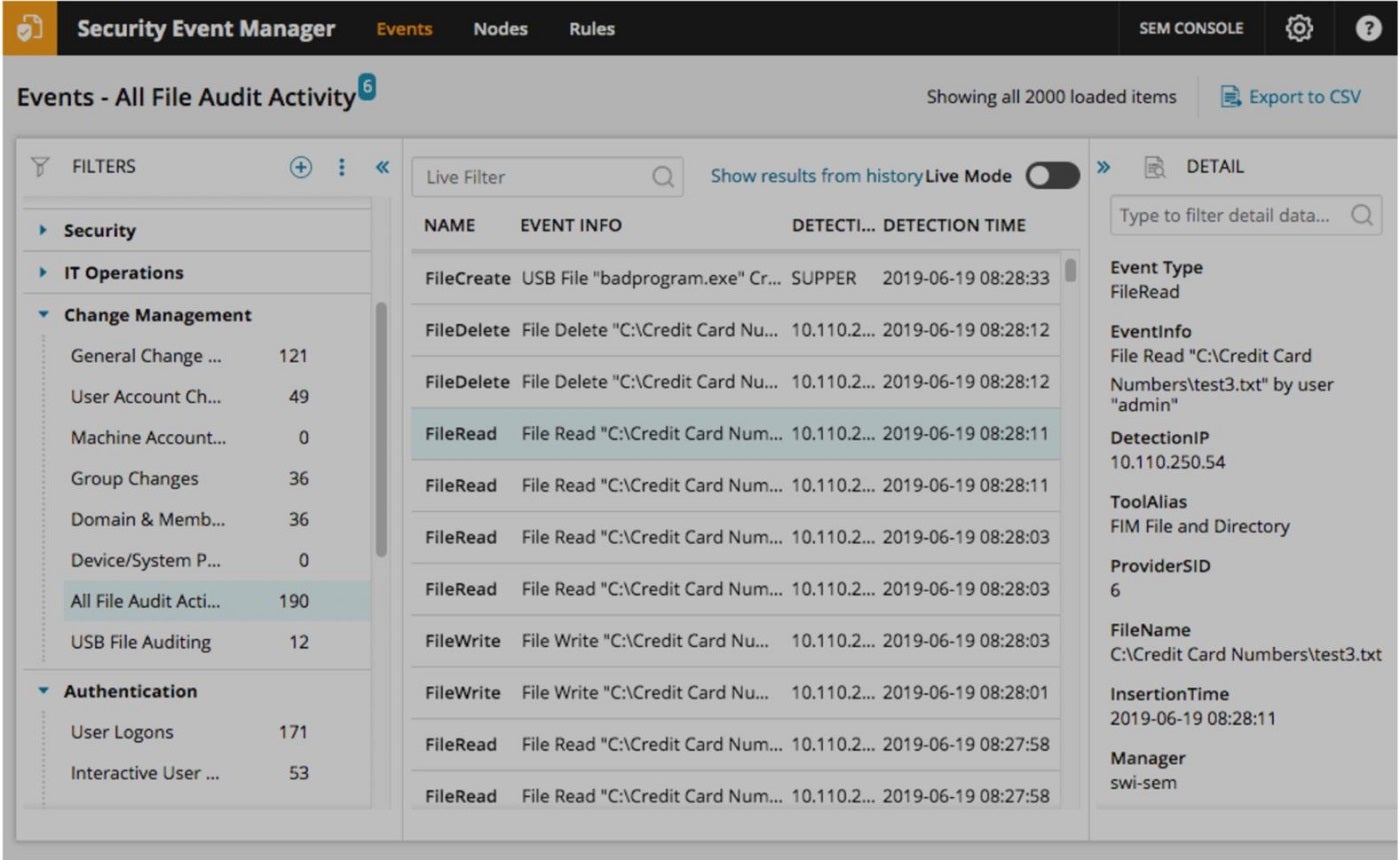
Why we chose SolarWinds Security Event Manager
This tool was chosen due to its centralized platform and seamless integration with various security technologies, offering streamlined security management.
Pricing
SolarWinds Event Manager offers subscription and perpetual licensing plans. Contact the vendor for a custom quote.
Features
- Built-in file integrity monitoring.
- Centralized log collection and normalization.
- Integrated compliance reporting tools.
- Advanced pfSense firewall log analyzer.
- Advanced persistent threat (APT) security software.
Pros
- Offers real-time network performance statistics.
- Centralized logon audit events monitor for tracking of security events.
- Improved security, real-time monitoring and troubleshooting with advanced pfSense firewall log analyzer.
- Integrates with various security technologies for better visibility.
- Provides in-depth analysis of log entries to enhance threat detection.
Cons
- Absence of cloud version.
Trend Micro Managed XDR: Best for dedicated SOC support

Trend Micro Managed XDR is a security service that offers 24/7 monitoring and analysis. It stands out for its ability to correlate data from a wide range of sources, including email, endpoint, server, cloud, workload and network. This cross-layered approach enhances threat hunting and provides greater insight into the source and spread of targeted attacks. The solution continuously scans for indicators of compromise or attack, including those shared via US-CERT and third-party disclosures, ensuring a proactive approach to threat hunting.
In addition to the above features, Managed XDR provides dedicated support for Security Operations Center (SOC) teams, reducing the time to identify, investigate and respond to threats. As part of Trend Service One, it includes premium support and incident response services, extending its value across the product.

Why we chose Trend Micro Managed XDR
We chose Trend Micro Managed XDR for its 24/7 support for Security Operations Center (SOC) teams, and its threat-hunting capabilities that enhance time-to-detect and time-to-respond performance.
Pricing
Trend Micro Managed XDR offers a 30-day free trial. Contact the vendor for pricing.
Features
- Endpoint detection and response.
- 24/7 analysis and monitoring.
- Advanced threat intelligence.
- Cross-layered detection and response.
- Optimized security analytics.
Pros
- Dedicated support for SOC and IT security teams.
- Offers server and email protection.
- Proactive threat hunting for advanced threats.
- Contains threats and automatically generates IoCs to prevent future attacks.
- Generates threat alerts and detailed incident reports.
Cons
- Lack of on-premises solution.
Heimdal Threat Hunting and Action Center: Best for single-command threat mitigation

Heimdal’s threat hunting and detection solution equips SecOps teams and IT administrators with tools for identifying and monitoring anomalous behavior across devices and networks. Leveraging its advanced XTP engine, the Heimdal suite and the MITRE ATT&CK framework, this platform visualizes relevant information related to endpoints for network-level threat detection.
Users gain insights through risk scores and forensic analysis, which enhances their understanding of potential threats. The continuous scanning by the XTP engine adds a strategic layer to threat identification and monitoring, allowing for prompt remediation with a single command wherever threats are identified.
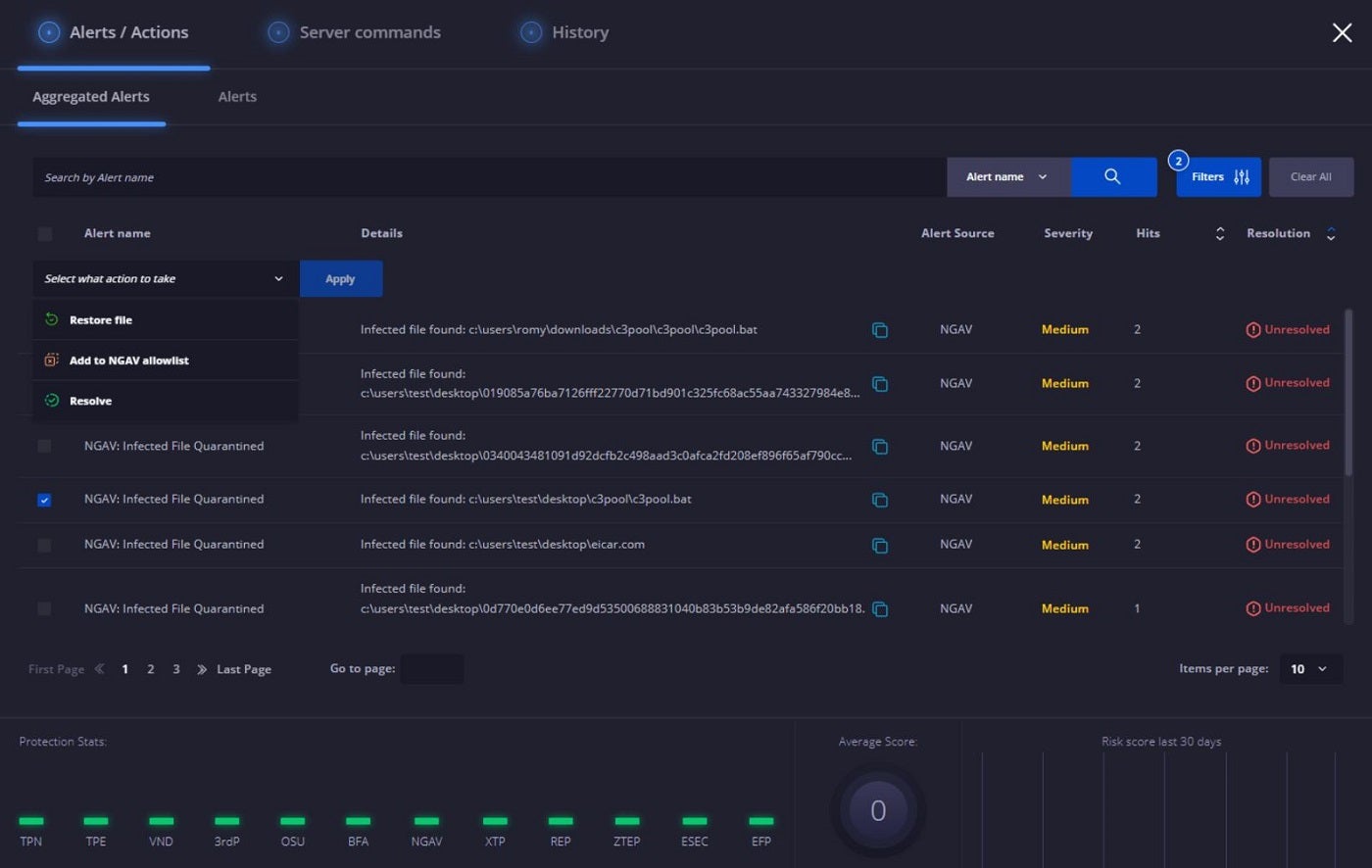
Why we chose Heimdal Threat Hunting and Action Center
This solution stands out because of its one-click execution of commands like scanning, quarantine and isolation, along with in-depth incident investigation powered by its Action Center.
Pricing
Contact the vendor for a quote.
Features
- Next-gen antivirus, firewall and mobile device management (MDM).
- Incident investigation and management.
- Activity tracking and monitoring.
- XTP Engine and MITRE ATT&CK framework.
- Quarantine functionality.
Pros
- Provides a centralized list of the threats detected.
- Real-time threat monitoring and alerts are provided.
- Makes for prompt reporting and statistics.
- Single-command remediation is possible with the action center.
- Provides a unified view for intelligence, hunting and response.
Cons
- No pricing information available online.
Cynet 360 AutoXDR: Best for innovative threat hunting

Cynet 360 is an enterprise-level threat-hunting solution that utilizes machine learning and behavioral analysis to identify suspicious behavior/anomalies within a network. It natively consolidates essential security technologies into a unified XDR platform and offers MDR services, including monitoring, investigation, on-demand analysis and incident response.
Additionally, the tool offers a Cynet Deception feature that uses different types of decoys — like fake data files, credentials and network connections — to hunt threats at different levels of a system. When an intruder interacts with these decoys, like logging in with a fake password or opening a fake data file, it sets off an alert on the potential threat. The deception feature lets users set up fake files, users, hosts and networks to uncover intruders in the system.
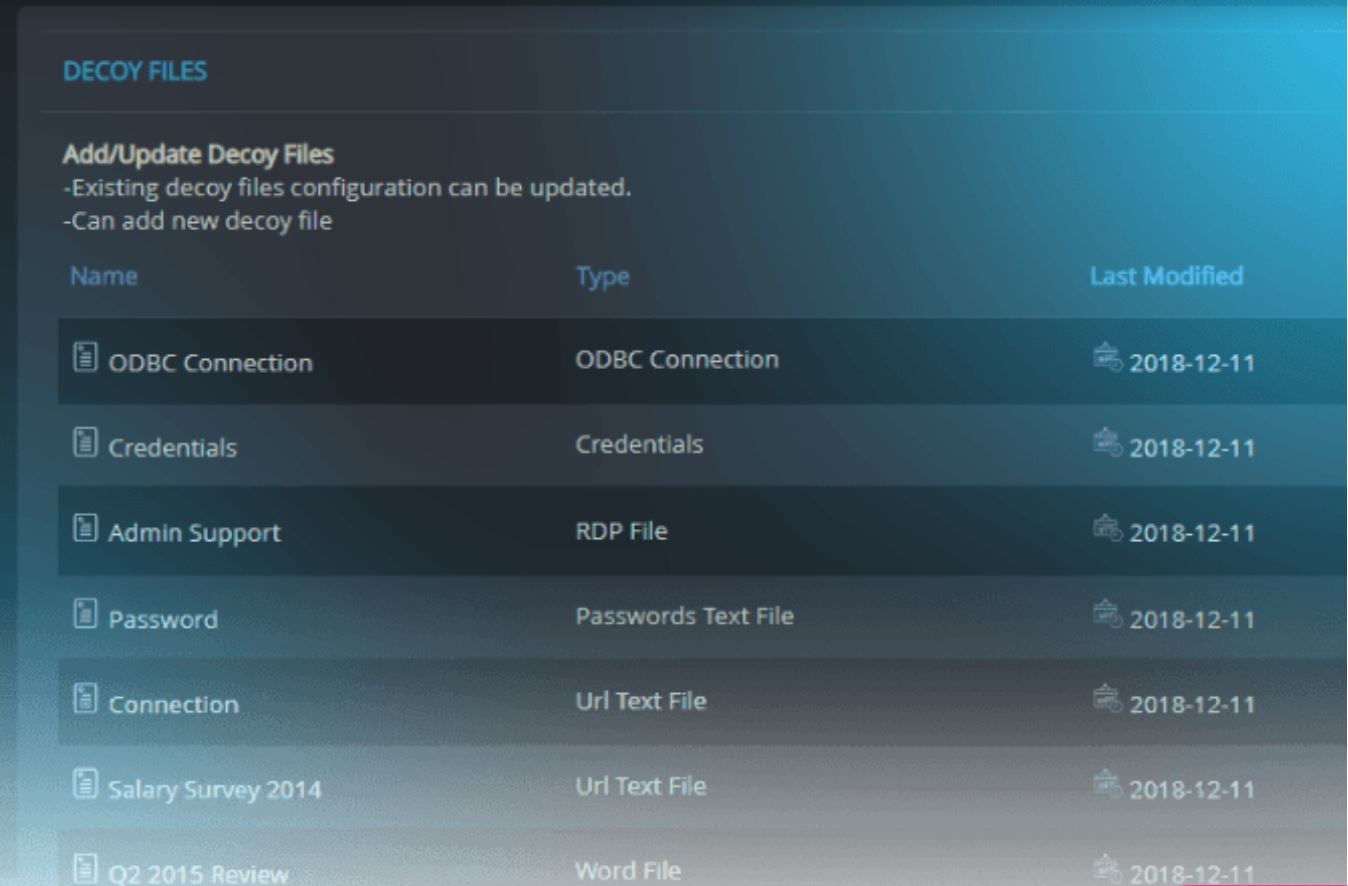
Why we chose Cynet 360 AutoXDR
Cynet 360 made it to our list following its innovative approach to threat hunting executed through its deception feature that sets up decoy tokens for threat detection.
Pricing
This solution offers a 14-day free trial period with no pricing option. Contact the vendor for pricing.
Features
- Centralized threat management dashboard.
- Next-generation antivirus.
- Dedicated threat response team.
- Deployment and configuration managed service.
- Cynet deception.
Pros
- Offers threat detection and alerts.
- Offers innovative threat hunting and mitigation with Cynet Deception.
- Provides advanced reporting and analysis.
- CyOps MDR Team assists in identifying malicious files and processes.
- Offers automated threat analysis and remediation.
Cons
- No displayed log manager.
Key Features of Cyber Threat Hunting Tools
From log analysis and proactive threat identification to intelligence sharing, threat hunting solutions can be equipped with several features that separate them from traditional security monitoring tools. Below are some key features every threat-hunting tool should possess.
Data collection and analysis
Threat hunting tools gather and aggregate vast amounts of data from various sources, such as logs, events, endpoint telemetry and network traffic. Leveraging advanced analytics and machine learning, unusual patterns and anomalies are determined. These solutions enhance their understanding of potential threats by reviewing or scrutinizing alerts from SIEM systems and Intrusion detection systems (IDS). They analyze the data gathered from firewalls, IDS, DNS, file and user data, antivirus solutions and other security devices for better insight on what to categorize as potential threats and best remediation channels.
Proactive search and identification of threats
This feature helps security analysts explore and investigate extensive data collected from various sources. The advanced search and query language support enables them to search, filter and query the data. To do this, security teams can customize and streamline their searches based on certain organizational requirements to extract information like time ranges, specific IP addresses, user accounts or types of activities. One of the most important aspects of this feature is that not only does it perform real-time analysis by querying live data streams to identify ongoing threats promptly, but it also performs historical data analysis that identifies past incidents or patterns that might have gone unnoticed initially.
Collaboration and intelligence sharing
Threat hunting goes beyond individual initiatives, as the data collected and processed individually will be limited. Effective collaboration and intelligence sharing among organizations, security teams, and industry partners are essential, and this can only be achieved by integrating sharable threat intelligence feeds in threat hunting tools. The exchange of threat intelligence, tactics, techniques and procedures (TTPs) facilitates threat hunting and remediation across diverse organizations.
Behavioral analysis
Threat-hunting tools rely on behavioral analysis to learn and understand normal patterns of user and system behavior. They then utilize techniques such as user and entity behavior analytics (UEBA), machine learning algorithms and continuous monitoring to identify anomalies, provide context and enable early threat detection. This feature also helps reduce false positives and enhances proactive identification and response to security risks.
Automated response
This feature prioritizes alerts based on predefined criteria, ensuring that critical or identified threats receive immediate attention. It includes dynamic playbooks, integration with security orchestration platforms and actions such as incident containment and isolation, user account remediation and alert prioritization. With automated responses, organizations can reduce dwell time, make incident response more efficient and achieve compliance with security policies while ensuring that their network and systems are protected against security risks and threats.
How do I choose the best cyber threat-hunting tool for my business?
Choosing the best cyber threat-hunting tool for your individual or business needs borders on many factors, including your personal or business objectives, how the tool fits into your current security infrastructure and your budget. These seven tools are great threat-hunting tools, depending on your personal/business needs.
For example, if you need an innovative threat-hunting tool that utilizes a unique approach to threat hunting, the Cynet 360 is your best bet. If a single action remediation that encompasses scanning, quarantine and isolation along with an in-depth incident investigation is your goal, then the Heimdal Threat Hunting and Action Center is your best option. The same applies to other tools, as they each have a unique approach to threat hunting and remediation.
However, as with any tool, its effectiveness will depend on how well it is integrated into an organization’s existing infrastructure and security protocols. It’s always recommended to evaluate these tools in the context of your organization’s specific needs and challenges.
Review methodology
For this review, I considered important features of threat-hunting solutions, the diverse approaches each tool uses to detect threats, their remediation processes, integration capabilities with existing systems and whether the vendors offered personalized support. I gathered information from the different vendors’ websites and review sites like Gartner to gain more insight on each tool. I also considered the developers’ reputations and where they stand in the industry.

